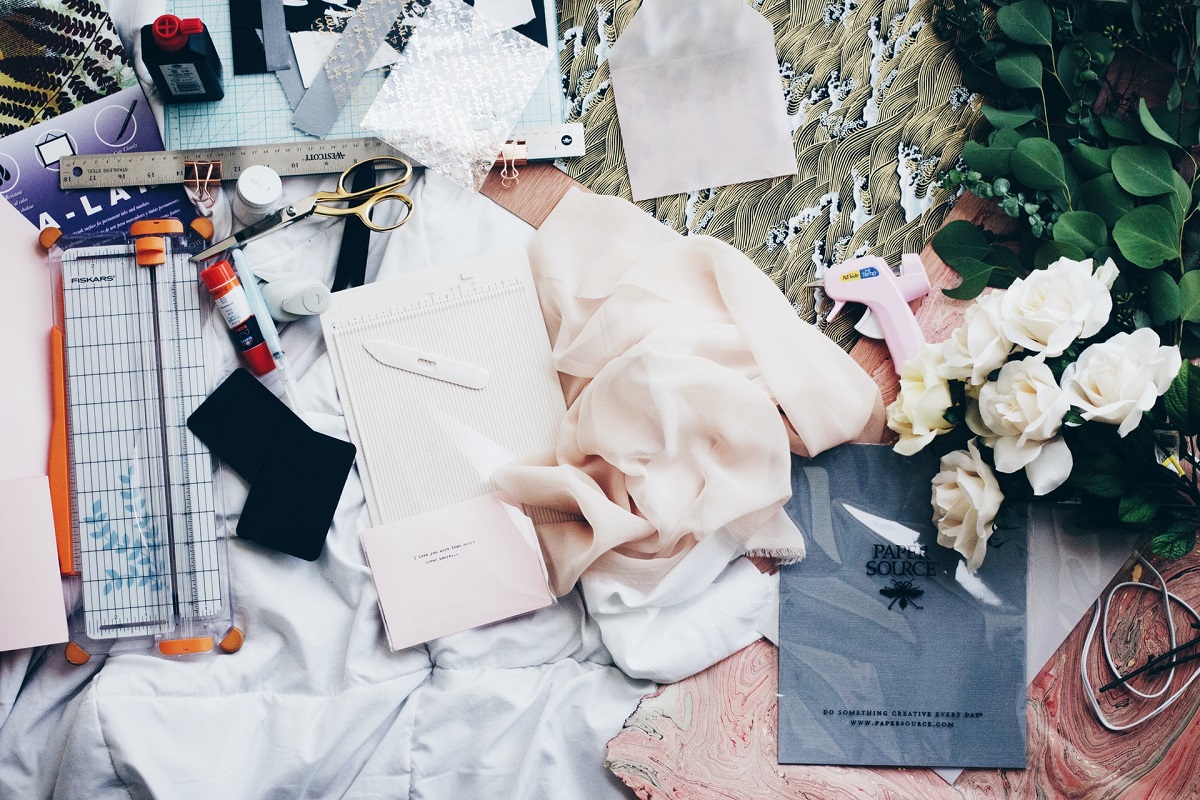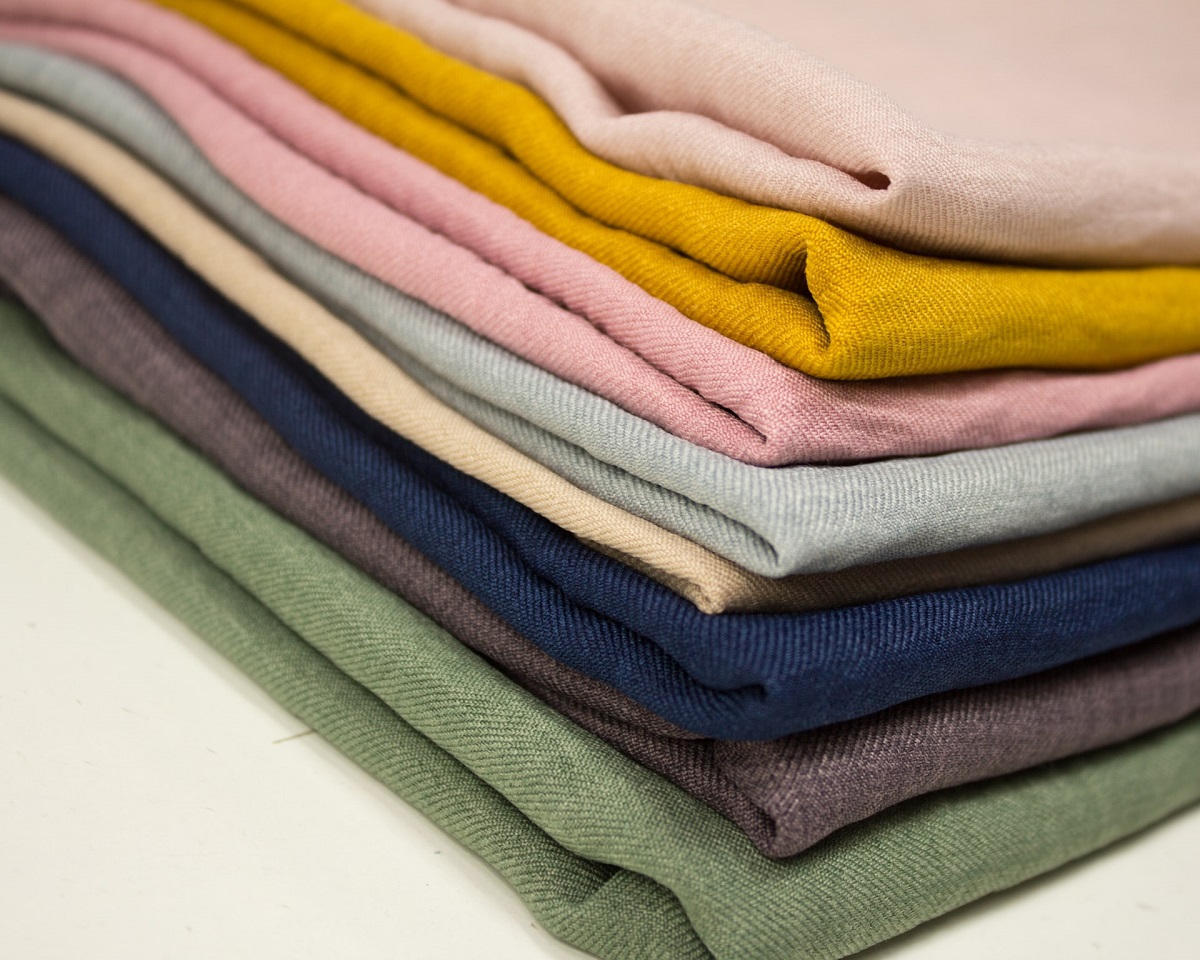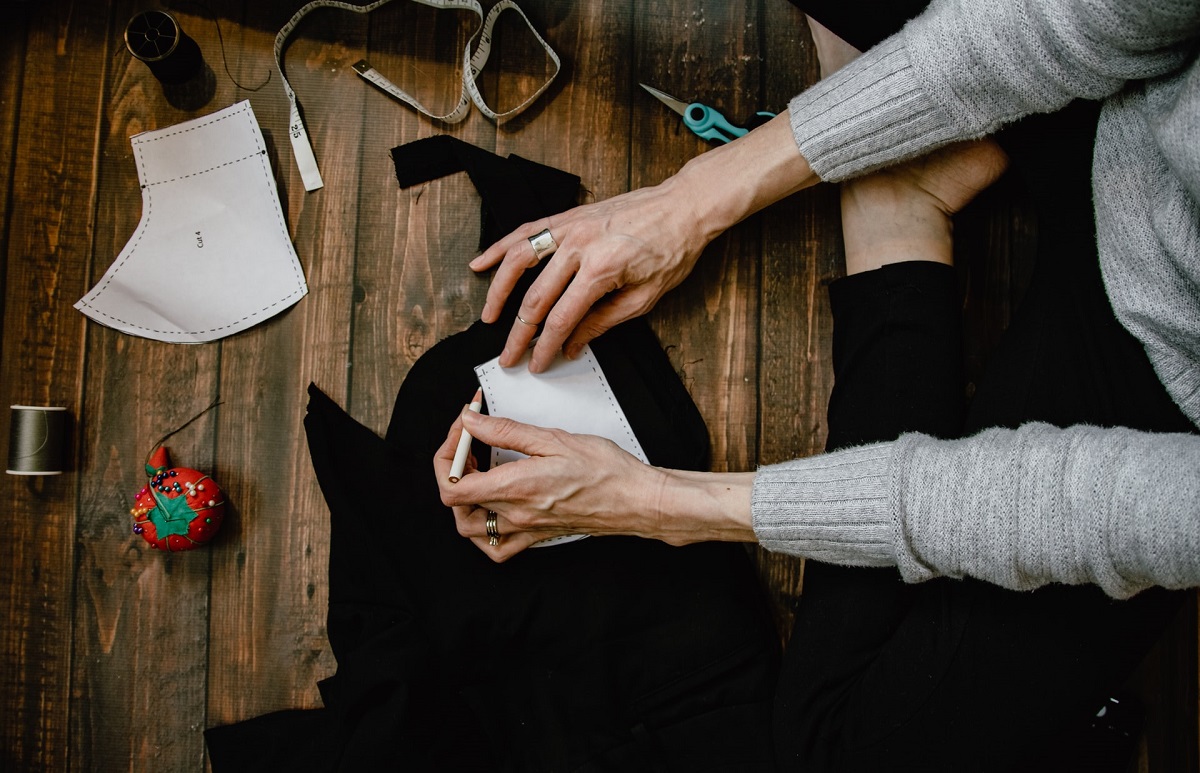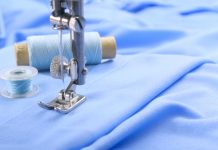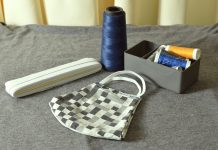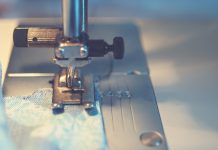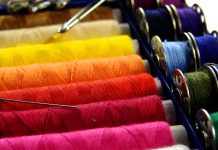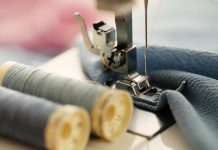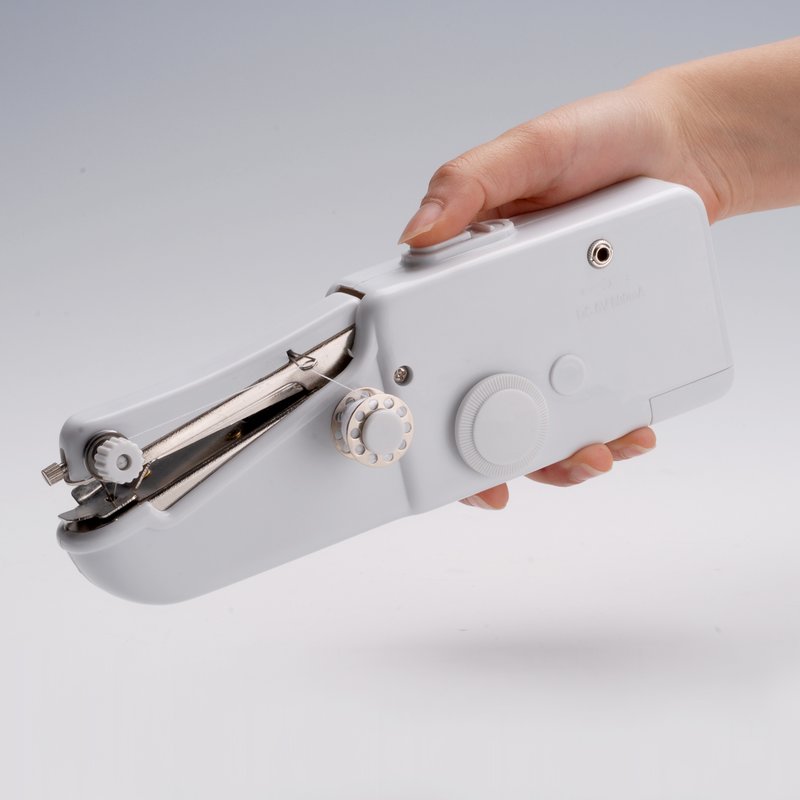Sewing your own clothing is a fulfilling hobby, allowing you to craft your style and build it yourself. Whether you’re doing it for fun, practice, or to create your wardrobe from scratch, there are many reasons people love this savvy craft. In this article, we’re giving you tips for sewing your clothes at home. We’ll start with beginner tips and work our way to the more advanced.
Tips for Sewing Clothes at Home
Learning to sew and learning to sew clothes are two very different things. Clothes are one of the most complex areas of sewing. But because clothing is such a broad category, there are many projects suitable for varying skill levels.
Therefore, before you get into sewing clothes, you’ll need to know how to sew. Here are some beginner tips for doing just that:
Beginner Tips
1. Get the Supplies
Before you start sewing, you need to pick up the proper supplies. Of course, the exact supplies may differ for each piece of clothing you make (fabrics, buttons, etc.), but you need a basic sewing supply tool kit for any project.
First thing’s first, you need a sewing machine (of course). There are plenty of quality machines available, and which one is right for you will really depend on your budget. You can get started with a budget sewing machine with no problem! Your sewing machine should come with the accessories needed to get started (bobbins, spools, etc.).
In terms of sewing supplies, every sewer should have the following: scissors, measuring tape, fabric chalk, pins, seam ripper, and safety pins.
2. Learn to Use a Sewing Machine
If you’re an absolute beginner, the first step is to learn to use your sewing machine. Since this article is about sewing clothes, we won’t give an in-depth sewing machine tutorial. Instead, we’ll recommend that you thoroughly read your machine’s owner’s guide. There are also tons of handy sewing machine tutorials right on this website! Modern sewing machines aren’t overly complicated, and you could learn the ins and outs of your new sewing machine in under an hour.
Sewing Clothes
Once you’ve covered the basics, it’s time to start building the skills necessary to sew your clothes. Sewing takes time and patience. And above all, it takes practice. Anyone can become an expert sewer if they put in the hours. It’s about building your skills project by project and not getting discouraged by mistakes because everyone makes them.
Here are some projects you can undertake to sharpen your skills and get ready to sew your own clothes:
3. Pick a Beginner Project
Before you start sewing your own clothes, pick a simple project to pick up the basics of sewing. A popular project among beginners is making a pillow. Pillows teach you how to cut fabric to specification, how to allocate seam allowances, and how to use your sewing machine. These are basic, necessary skills for all sewers, and you’ll build on all of them when you make clothing. Plus, you might as well sew something you will use. Plus, you can make your pillow with any fabric you please.
If you’re still not confident, try it again! No harm with playing around until you get it right. Once you’re confident in these basic skills, you can up your game and try your hand at some clothing.
Learning to Sew Clothes
Once you’ve learned the basics of sewing, it’s time to learn to sew clothes (if that’s what you’re into, of course). If you’re just starting out, we recommend that you start sewing with patterns, which we’ll cover further below.
4. Practice with Scraps
Fabric is expensive. And if you’re buying fabric for clothing, you might be tempted to get quality fabric with intricate patterns. But you can’t expect to get things perfect on the first try, and you don’t want to waste that prime fabric on your first-time attempts. For this reason, we recommend that you start with scrap fabric.
You can pick up scrap fabric at many thrift shops and fabric stores, and it’s a fraction of the price of new fabric. Pick up some scraps, and use them to hone your skills before making clothing for keeps. Scrap fabric is a great way to hone the basics of sewing and to learn your sewing machine.
Scrap fabric also takes the pressure off. You won’t be worried about making mistakes and ruining your favorite fabric. Instead, you’ll put your focus on building your skills. After all, you should expect to make mistakes when you’re just starting, and these mistakes are a necessary part of the process.
5. Use Patterns
What are Patterns?
If you’re a beginner sewist, then a sewing pattern is your best friend. Even advanced sewers rely on patterns to sew clothing.
You can think of patterns as your instruction manual and guidebook for sewing clothing. Patterns are sets of lines drawn on paper, which are used as outlines to cut the fabric you need for a particular piece of clothing. They are essentially tracings, where you overlay the fabric and cut each piece. Then, you have the components you need to sew together to make the clothing.
For example, a basic shirt pattern will typically have four components – back, front, sleeves, and neckband. You overlay the fabric on your shirt pattern, cut, and you have the pieces to make your very own shirt!
Quality patterns will also include different outlines depending on the size you want to make. For example, the lines for a large-sized shirt will sit outside those for a medium-sized shirt, etc. You can find patterns at art stores, fabric stores, and online. The outside of the package will show the completed work, so you can pick your favorite style. They come as large pieces of (usually) thick paper, and you unfold them at home.
6. For First-Timers – Pick an Easy Pattern
There are so many types of clothing, and you’ll find all kinds of patterns that offer a variety of difficulties. Of course, as a beginner, you’ll want to start with an easy pattern. An easy pattern will have fewer cutouts, larger cutouts, and straight or gently curved seams. These features make it easier to cut, pin, and sew your first project.
For beginners, try one of the following basic patterns:
- T-shirts
- Skirts
- Aprons
- Maxi Dress
- Pajama pants
And the list goes on. As long as you pay attention to the cut-outs involved, you can pick a project that is accessible to beginners.
7. Using Patterns – The Cut
So, you’ve picked your pattern, and you’re ready to start sewing. How should you get started the right way?
The first step in using patterns is cutting. To use a pattern, first cut the patterns out of the paper itself. You will use these individual pieces to overlay on the fabric to cut the pieces of fabric.
However, if you plan on using the pattern more than once, you may want to keep it intact. Some savvy sewers have taken the original pattern and traced second copies of it. Then, they’ve cut on these traced patterns. This approach gives you individual pattern pieces while maintaining your original pattern for later use.
Once you’ve cut the pattern, it’s time to cut the fabric. It’s important to note that you can cut the necessary pieces of most patterns with one cut per piece. You can achieve this by folding your fabric before cutting and overlaying the patterns on top of the folded piece. Depending on the type of pattern, you may need to cut it differently:
- You cut some pieces along the edge of the fold ply and unfold them into one symmetrical piece, like the back or front of a shirt.
- You can cut other pieces inside the edges of the folded fabric piece, so you get two identical, independent pieces, such as identical sleeves for a shirt. If you’re uncomfortable doing this or your fabric is too thick, you can always do the same process twice.
Once the fabric is cut, you’ll want to pin the pieces of fabric underneath the patterns so that you can sew pieces together. This is because the patterns are marked with seam allowances that show you where to sew, which we’ll cover next:
8. Using Patterns – Understanding Seam Allowances
You’ve cut your fabric pieces, and you’re ready to sew. There’s one more important thing
to understand about each pattern piece before you get started, and that’s seam allowances. Seam allowances are edges along each fabric piece where the seams will be. They allow an adequate amount of space to create a stable seam for the garment.
Quality patterns will include inseam lengths, eliminating the need to draw them yourself, so there’s no question of how big the seam allowances should be to support the garment. If there is no seam allowance on your pattern, you’ll have to make one yourself by measuring along each outer edge and making the markings yourself.
You’ll then overlay the fabric that you already cut and get to sewing. The pattern should include instructions for how the patterns are to be combined, and it will be a simple process of sewing along the seam allowances until you have a completed piece of clothing. Since the seam allowances go on the inside of the shirt, you’ll simply flip it inside out, and it’s ready to wear.
More Tips and Tricks
Throughout this list, we tried to include a good blend of advice and practical techniques. We end our list with a few more pieces of advice that we feel are very valuable to becoming a good sewer. Think of these as sewing tips as philosophies. They helped us become better sewers, and we know they can help you become a better seamstress, too:
9. Pick Varied Projects – And Track Your Progress!
Sewing clothing is a fantastic way to become a well-rounded sewer. With so many types of clothing available, there are so many ways to grow your skills in all areas of sewing.
Once you’re comfortable with basic patterns and garment sewing, grow your skills by taking on projects outside of your comfort zone. Don’t be afraid to mix it up – shirts, pants, hats, pockets, zippers, try it all. Even if you don’t nail it the first time, each project will build your skills a little bit. Plus, if you’re using scrap fabric (like in our tip above), then you don’t have to worry about ruining good fabric.
Another trend that we noticed among expert sewers is keeping a sewing journal. Keep a journal, and write down any new tips, tricks, and methods you learned. It helps you categorize the big lesson from each sewing project you do. Even if you only learn a simple new trick or an advanced way of doing something you already knew, keeping a journal is worthwhile.
10. Go Slow
Remember to take it slow. Expert clothing sewers didn’t get there overnight. It took years of hard work, patience, and trial and error. And even if your goal isn’t to become an expert, you’ll find it hard to get anywhere by rushing the process.
Slow down, take your time, and realize that there’s no rush to become a good sewer. If you’re working with instructions, remember to follow them carefully. And if you’re ever struggling, remember that the internet has tips & tutorials for every issue you may have, including right here on this website.
Conclusion
Thanks for reading our tips & tricks for sewing clothing at home. Anyone can learn to sew their own clothes with the right tools and a willingness to learn. You can find clothing patterns for all types of clothing, and you’ll be wearing your own homemade wardrobe before you know it!

